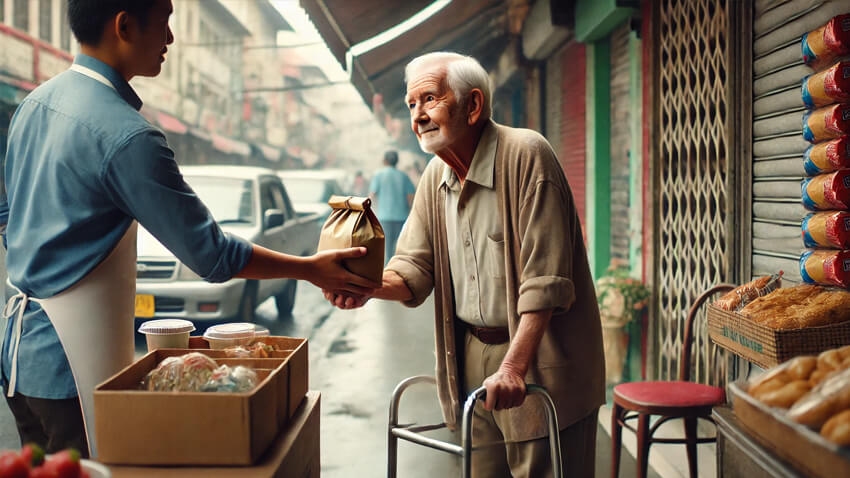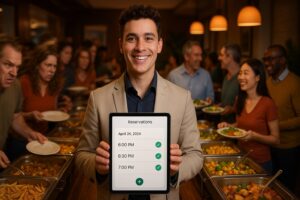Food delivery apps are becoming a necessary part of everyday living in the modern world since they make it simple to order takeout from the comfort of your home. There is no denying the convenience, your favorite foods are only a few taps away, there is no need to leave the house, and there are no dishes to wash. But the appeal of delivery also entails some unstated expenses and trade-offs, such as exorbitant fees and problems with freshness. We'll explore in this blog how choosing pickup over delivery can improve your eating experience, help you save money, and ultimately allow you to savor your favorite meals the way they were intended to be enjoyed.
The True Cost of Delivery Convenience
On the surface, food delivery seems like a fair price to pay for
convenience. A closer look reveals several hidden expenses that
accumulate over time when using delivery applications. Costs such as
delivery charges, service fees, and tips are often added on top of the
menu prices. As a result, the total cost of delivery can be
significantly higher than the original prices at restaurants. These
additional fees can vary based on the app, the distance to the
restaurant, and even the time of day.
According to a
recent survey,
the average food delivery order is 31% more expensive than a similar
pickup order due to extra fees and costs. Over a year, these added
expenses can total hundreds or even thousands of dollars. For instance,
spending 500 LKR more per order can cost an additional 10,000 LKR
annually for those who order weekly. In a world where budgets are tight
and inflation affects food prices, making thoughtful choices about how
we dine can have a significant impact on our finances.
Freshness and Food Quality
Delivery inevitably involves time delays, whether due to driver availability, traffic, or food preparation times. As a result, by the time your food arrives, it may not be at its peak freshness. Hot dishes may arrive lukewarm, and cold dishes could be soggy or wilted. A study published by the National Library of Medicine found that 28% of surveyed customers reported dissatisfaction with the freshness and quality of their delivered food compared to dining in or picking up their meals.
Your food is delivered straight from the restaurant when you pick it up,
frequently just a few minutes after it has been cooked. By maintaining
the desired textures, flavors, and temperatures, you may savor your meal
to the fullest. For foods like fries, burgers, and other goods that tend
to lose quality rapidly after packaging, this can be particularly
crucial.
Food Safety Concerns
Third-party distribution raises additional concerns about food safety in
addition to the possible quality decline. The majority of eateries place
a high priority on food safety, however once your food is delivered to a
third-party driver, you lose control over it. Delivery drivers sometimes
move several orders within a single shift, increasing the possibility of
cross-contamination and exposure to different substances in their cars.
This lack of control over food handling and transportation can be
especially problematic for people with allergies or dietary
restrictions. By picking up your food, you can check that your order is
right and that your dietary requirements are satisfied before you leave
the restaurant. Additionally, you eliminate any needless hazards related
to the delivery procedure by managing the transportation yourself.
Environmental Impact of Delivery
There is a carbon impact associated with each delivery order. Food delivery has an impact on the environment because of the fuel used for transportation and the materials used for packing. A significant source of trash is the packaging used for delivery orders, which is frequently made of Styrofoam or single-use plastic. The majority of orders are still put in non-recyclable containers, although many delivery apps promote environmentally friendly packaging.
Choosing pickup can
drastically cut trash, especially when paired with reusable bags or
containers. Additionally, compared to a car delivery, picking up your
food by foot or bicycle lowers emissions. Pickup can be a simple
solution for diners who care about the environment to reduce their
carbon footprint while still enjoying their meals at restaurants.
Supporting Local Restaurants
Restaurants pay food delivery apps a hefty charge, which might reach 30%
for each order. These costs might make it challenging for small,
neighborhood eateries to turn a profit from delivery orders,
particularly if they already have narrow profit margins. When you opt
for pickup, the restaurant keeps all of your money, which helps them run
their business. Picking up your meal can significantly impact small
companies in a post-pandemic world when many local restaurants are still
recuperating.
Conclusion
As we’ve explored, picking up your food offers numerous benefits over delivery, from cost savings and better food quality to reduced environmental impact. For those looking to enjoy restaurant-quality meals without the downsides of delivery, pickup is a reliable choice that doesn’t sacrifice convenience. And while delivery may still be an occasional necessity for those extra-busy days, making pickup a habit can transform the way you dine.
In conclusion, the next time you’re craving a delicious meal from your favorite restaurant, consider picking it up yourself. Not only will you save money, but you’ll also enjoy fresher, higher-quality food and directly support your local businesses. With tools like RUSH. the convenience of pickup is enhanced, offering a simple and efficient way to order and pick up your meals without the added drama and cost of delivery.




